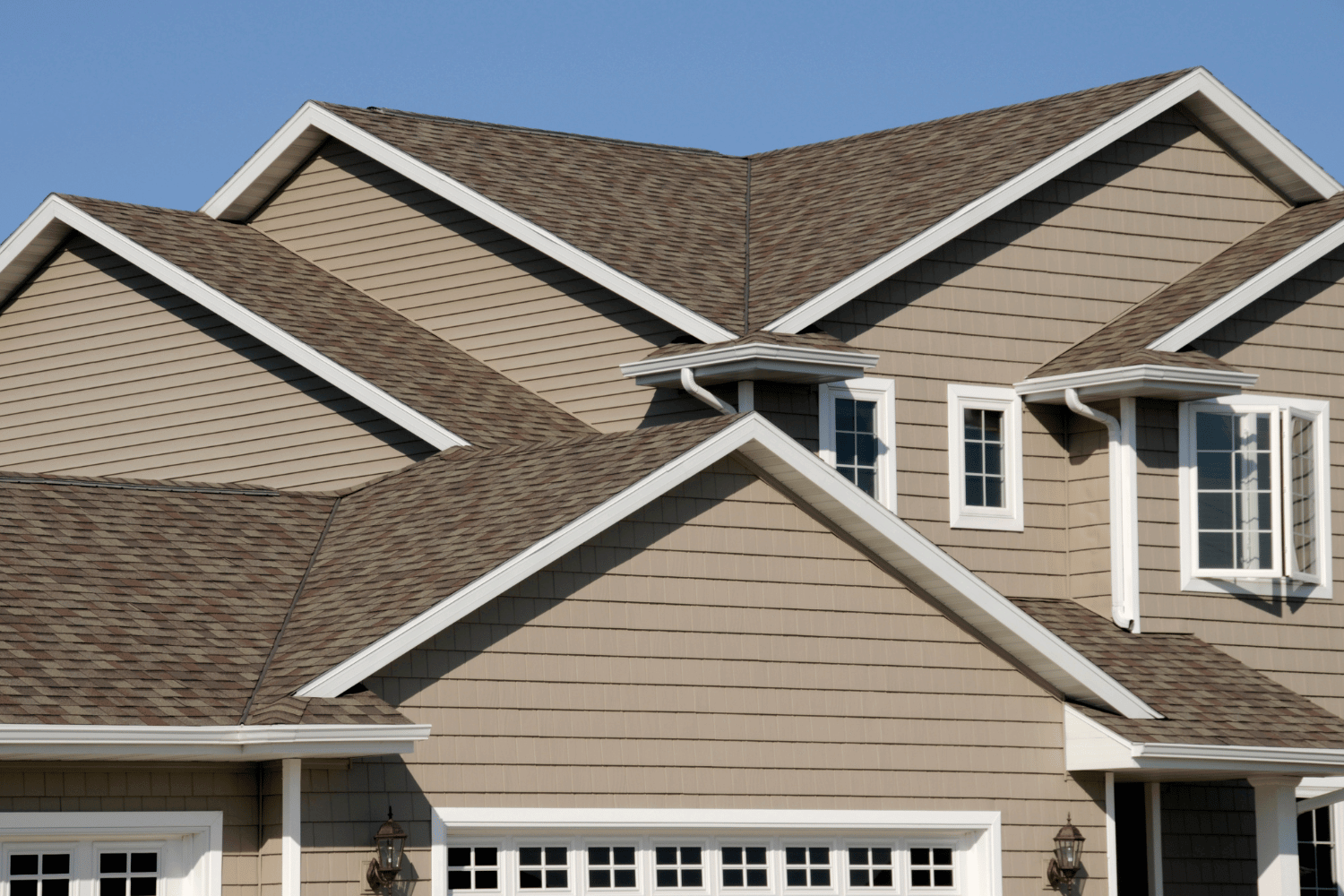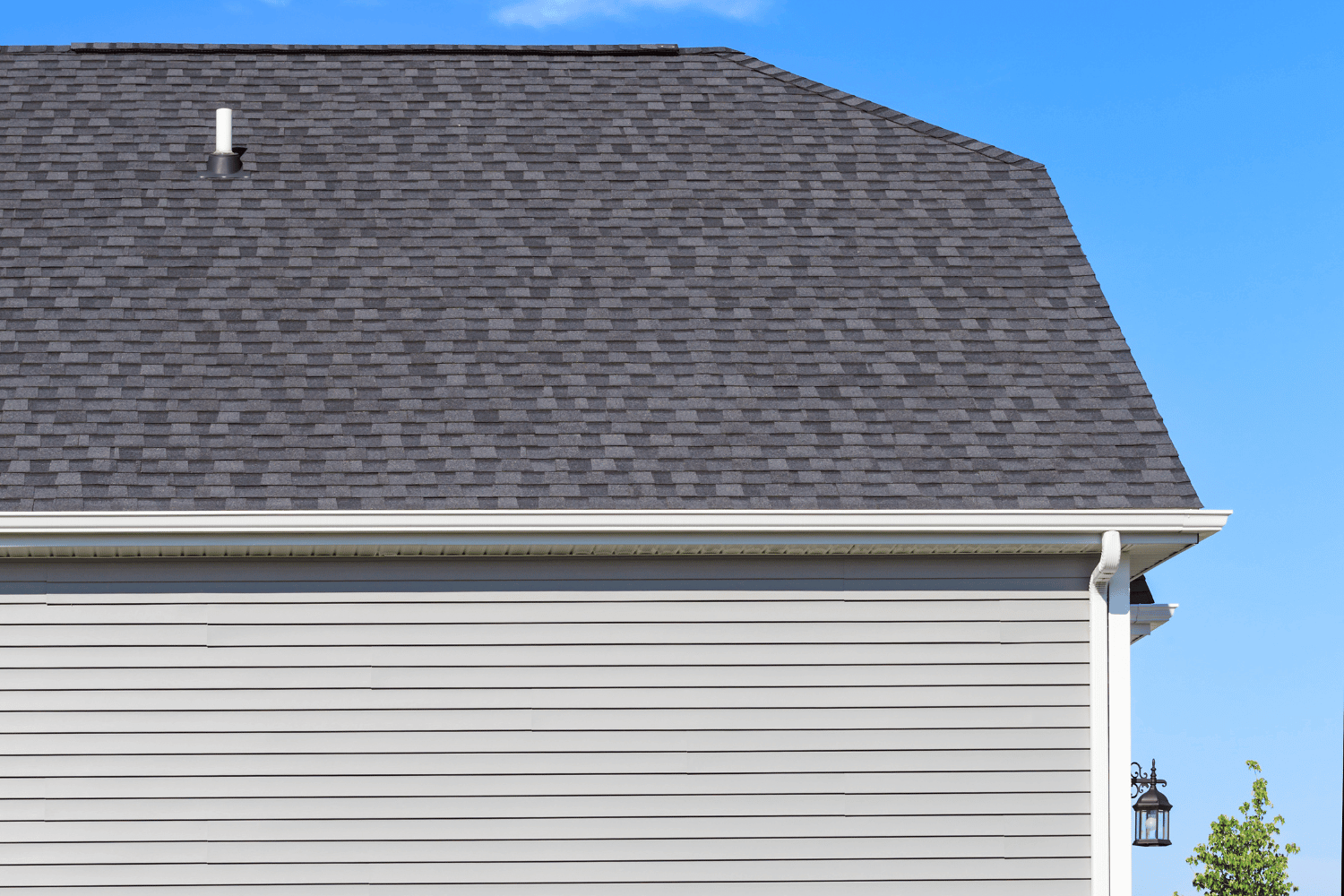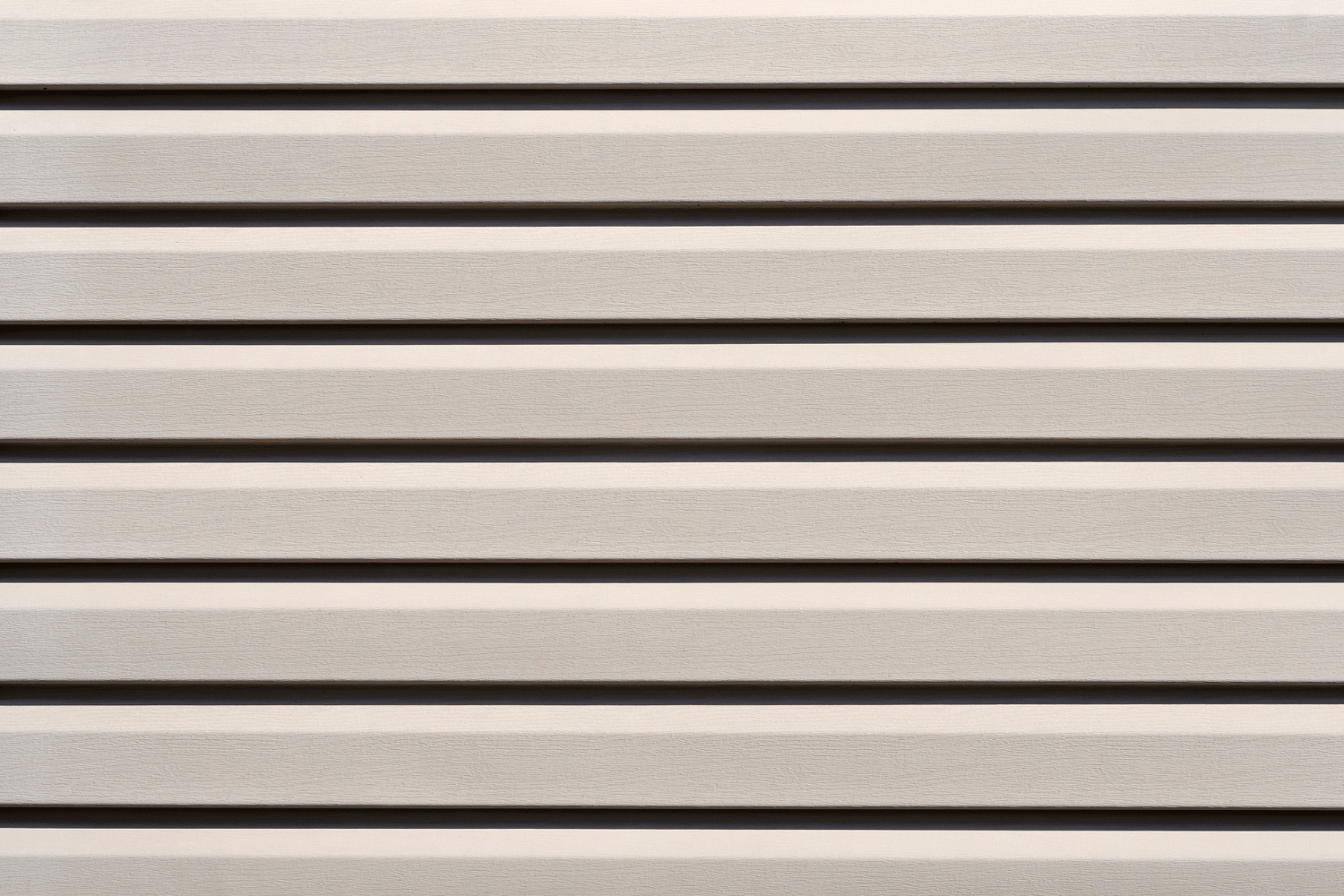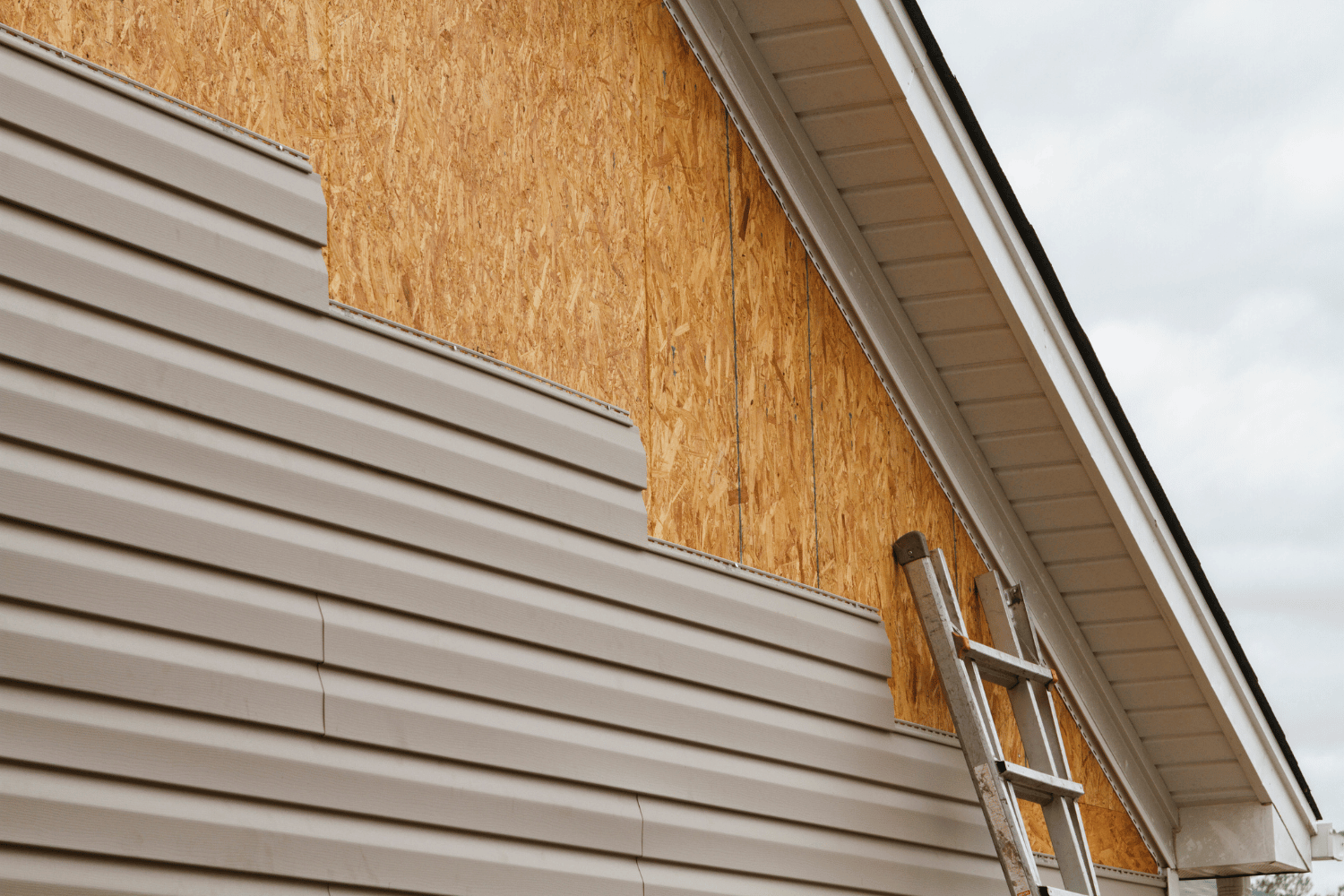Looking for the best vinyl siding adhesive for your project? This comprehensive guide will help you choose the right adhesive, explain why it’s a better option than nails or screws, and provide easy-to-follow application steps.
Key Takeaways
-
Vinyl siding adhesive creates a strong bond that enhances durability and weather resistance, making it a vital choice over traditional fasteners.
-
Selecting the right adhesive involves ensuring compatibility with surfaces, considering weather resistance, and following manufacturer guidelines for optimal performance.
-
Proper surface preparation and application techniques are crucial for achieving a long-lasting bond and avoiding common mistakes like over-application of adhesive.
Understanding Vinyl Siding Adhesive

An overview of vinyl siding adhesive being applied.
Vinyl siding adhesive creates a secure and long-lasting bond, making the application process crucial. Unlike nails and screws, adhesives provide continuous contact across the entire surface, which improves sealing properties and enhances durability. Choosing adhesives specifically designed for exterior applications ensures they withstand outdoor conditions.
Vinyl siding itself offers numerous benefits, including durability, low maintenance, excellent insulation, and cost-effectiveness. Adhesive vinyl comes in various types, such as decor adhesive vinyl, which offers both aesthetic appeal and durability, and metallic adhesive vinyl, which withstands weather conditions while adding a modern touch. Understanding these options can help you make informed decisions about your siding’s appearance and longevity.
Types of Vinyl Siding Adhesives

Different types of vinyl siding adhesives displayed.
When it comes to securing your vinyl siding, several types of adhesives are specifically formulated for exterior use. These include PVC cement, polyurethane glue, and construction adhesive. Each type offers unique properties that make them effective for bonding vinyl siding to various surfaces. For instance, construction adhesive is known for its strong bonding capabilities and durability.
Another advantage of using adhesives is their ability to bond dissimilar materials, a task often challenging with mechanical fasteners. Manufacturer guidelines offer specific recommendations for adhesive selection based on your project’s requirements. This ensures you choose the most suitable adhesive for your siding needs.
How to Choose the Right Adhesive for Vinyl Siding
Selecting the right adhesive for your vinyl siding involves considering several factors. First, ensure the adhesive is compatible with the material it will bond with to guarantee a secure attachment. It’s also important to choose an adhesive that is weather-resistant and can handle the expansion and contraction of vinyl due to temperature changes.
Weather conditions play a significant role in adhesive performance. Adhesives need to withstand local climate factors such as moisture, temperature swings, and UV exposure. Additionally, the scale of the project impacts adhesive choice; larger projects may require stronger bonding agents to handle greater stress. Manufacturer guidelines offer valuable insights into the best adhesive for your needs.
Step-by-Step Guide to Applying Vinyl Siding Adhesive

Step-by-step guide for applying vinyl siding adhesive.
Applying vinyl siding adhesive correctly is vital for ensuring a strong and durable bond. This process involves several steps, including preparing the surface, applying the adhesive, and securing the siding.
Each step requires careful attention to detail to achieve the best results.
Preparing the Surface
Proper surface preparation creates a strong bond with vinyl siding adhesive. Start by thoroughly cleaning the surface to remove any dirt and debris that could interfere with the adhesive’s effectiveness. Clean the area with a mixture of mild soap and water, then rinse and let it dry completely.
Next, sand the surface lightly to ensure an even application and help the adhesive adhere better. This step is especially crucial for glossy surfaces. Smoothing the surface ensures the adhesive can bond effectively, providing a secure hold for your vinyl siding.
Applying the Adhesive
Once the surface is prepared, it’s time to apply the adhesive. Use a caulk gun or appropriate applicator to apply the adhesive in a continuous and even bead. This prevents gaps and ensures full contact with the siding. Proper ventilation maintains a safe working environment during this step.
Hold the siding in position until the adhesive sets firmly to ensure proper attachment and avoid issues like buckling or separation.
Allow the adhesive to cure according to the manufacturer’s instructions to achieve maximum strength.
Securing the Siding
After applying the adhesive, press the siding firmly into place to ensure a secure hold during the curing period. Temporary fasteners or clamps can help maintain alignment and prevent the siding from shifting while the adhesive sets.
Allow sufficient time for the adhesive to cure before removing any supports. This ensures a secure installation and long-lasting bond. Carefully following these steps will help achieve a professional-looking result and enhance your vinyl siding’s durability.
Common Mistakes to Avoid When Using Vinyl Siding Adhesive
Excessive adhesive can ooze during application, compromising bond strength. Using the correct amount of adhesive ensures adequate bonding without the risks associated with over-application. Careful measurement and application techniques are crucial for a reliable bond.
Avoiding mistakes in adhesive application ensures a strong bond and successful repairs. Applying too little adhesive or not preparing the surface properly can lead to weak bonds and potential failures. Taking the time to follow best practices will ensure your vinyl siding remains secure and durable.
Benefits of Using Adhesive Over Nails and Screws

Comparison of adhesive versus nails and screws.
Before: Construction adhesive offers several benefits over traditional fasteners like nails and screws. Adhesives provide a greater maximum load-bearing capacity across the entire surface, enhancing the durability of your vinyl siding. Unlike nails and screws, adhesives do not corrode or rust, further increasing the longevity of your siding.
After: Construction adhesive offers several benefits over traditional fasteners like nails and screws:
-
Greater maximum load-bearing capacity across the entire surface
-
Enhanced durability of your vinyl siding
-
Resistance to corrosion and rust, increasing the longevity of your siding
Additionally, adhesives improve sealing properties between bonded materials, providing better protection against water and air infiltration. This modern solution is especially useful for reattaching loose sections or securing decorative elements where concrete nails might replace impractical methods.
Overall, adhesives offer a robust and reliable alternative to traditional fastening methods.
Maintenance Tips for Vinyl Siding
Regular maintenance extends the lifespan of your vinyl siding. Here are some tips to keep it in good condition:
-
Clean the siding at least once a year to prevent dirt buildup and potential damage.
-
Use a mixture of mild soap and warm water or a vinegar-water solution for an eco-friendly cleaning option.
-
Power washing can also be effective, but it must be done carefully to avoid water damage.
By following these steps, you can ensure your vinyl siding remains in great shape for years to come.
Regular checks, such as inspecting for cracks or breaks and keeping gutters clear, are recommended. Promptly repairing minor issues prevents them from becoming major problems. Covering shrubs and plants during cleaning protects your landscaping from harsh chemicals and debris.
Environmental Impact of Vinyl Siding Adhesives

Environmental impact of vinyl siding adhesives.
The manufacturing of vinyl siding relies heavily on fossil fuels, leading to greenhouse gas emissions and environmental pollution. Disposal poses challenges due to its complex composition, often resulting in landfill waste. However, eco-friendly alternatives like recycled and composite materials can reduce reliance on virgin resources.
Green manufacturing practices, including using renewable energy, minimize the environmental footprint of siding production. Choosing siding materials with high recycled content can significantly lower their overall environmental impact.
Considering these factors can help you make more sustainable choices for your house.
Summary
In conclusion, understanding and using the right vinyl siding adhesive is crucial for maintaining the integrity and appearance of your home. From selecting the appropriate adhesive to applying it correctly and avoiding common mistakes, these steps ensure a strong and durable bond. The benefits of adhesives over traditional fasteners highlight their practicality and effectiveness.
Regular maintenance and considering the environmental impact of your choices further contribute to the longevity and sustainability of your vinyl siding. By following these guidelines, you can keep your home looking its best and enjoy the lasting benefits of well-maintained vinyl siding.
Frequently Asked Questions
What types of adhesives are best for vinyl siding?
For vinyl siding, PVC cement, polyurethane glue, and construction adhesive work best. Choose one that suits your specific needs for a reliable bond!
How do I prepare the surface before applying vinyl siding adhesive?
Make sure to clean the surface well to eliminate any dirt or debris, and don’t forget to sand it lightly for a smooth finish. This step is key for a strong bond when you apply the vinyl siding adhesive.
What are the benefits of using adhesive over nails and screws for vinyl siding?
Using adhesive for vinyl siding is beneficial because it provides stronger load-bearing support, won’t corrode or rust, and creates better seals than nails and screws. This means longer-lasting installations and improved durability for your siding.
How often should I clean my vinyl siding?
To keep your vinyl siding looking great, aim to clean it at least once a year with mild soap and water or a vinegar-water solution. Regular maintenance helps prevent dirt buildup and keeps your home fresh!
Are there eco-friendly alternatives to traditional vinyl siding adhesives?
Absolutely, you can find eco-friendly alternatives like adhesives made from recycled and composite materials, which help minimize the use of new resources. It’s a great way to make your home more sustainable!

